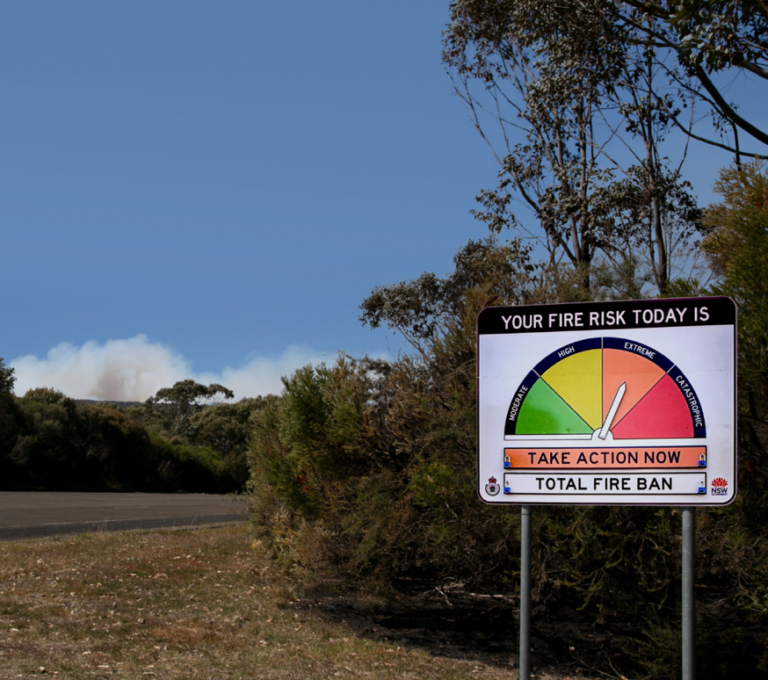
Fire danger ratings are being simplified from 1 September.
The new Australian Fire Danger Rating System is being developed using the latest science to be more accurate and relevant to where you live. The new system will be used across the country, so whether you’re at home or traveling, you will see the same system being used.
The new Fire Danger Ratings have four levels (instead of six) – Moderate, High, Extreme and Catastrophic.
When there is minimal risk, Fire Danger Rating signs will be set to ‘NO RATING’. This is the white wedge sitting under Moderate.
There’ll be actions for each level, so you’ll know what to do to protect your life, family and property.
You’ll start seeing the new fire danger ratings online and in your local community from September 2022.
The new ratings and what you need to do:
Plan and prepare.
- Stay up to date and be ready to act if there is a fire.
Be ready to act.
- There’s a heightened risk. Be alert for fires in your area.
- Decide what you will do if a fire starts.
- If a fire starts, your life and property may be at risk. The safest option is to avoid bush fire risk areas.
Take action now to protect your life and property.
- These are dangerous fire conditions.
- Check your bush fire plan and ensure that your property is fire ready.
- If a fire starts, take immediate action. If you and your property are not prepared to the highest level, go to a safer location well before the fire impacts.
- Reconsider travel through bush fire risk areas.
For your survival leave bush fire risk areas.
- These are the most dangerous conditions for a fire.
- Your life may depend on the decisions you make, even before there is a fire.
- Stay safe by going to a safer location early in the morning or the night before.
- Homes cannot withstand fires in these conditions.
- You may not be able to leave, and help may not be available.
Science and the community
The science underpinning the existing fire danger ratings has largely remained unchanged for more than 50 years. During that time, our understanding of fire and fire behaviour has changed.
In recent years, we’ve mapped the vegetation across the entire country. So instead of the current system using just bush and grass to determine the fire danger, the new system will use eight different types of vegetation – making it more accurate.
Using the latest science, fire agencies like the NSW RFS will be able to better assess the conditions and the consequences of a fire, if one was to start.
The new national system also uses extensive community research, to deliver a simplified approach to communicating bush fire danger ratings.
Fire danger rating signs
The new bush fire danger ratings will be used from September.
You’ll be able to check the daily fire danger for your area on the RFS website.
We’ll also be updating the hundreds of local fire danger rating signs in communities across the state.
You can also use the Fires Near Me NSW smartphone app to check the fire danger for your area.